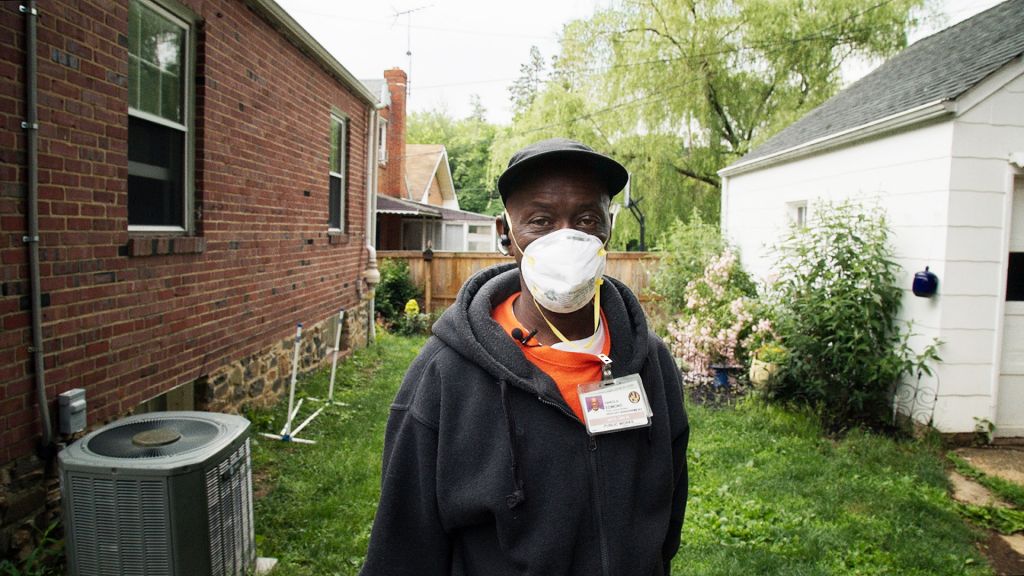“It’s cool to watch younger audiences watch the film, because they just get the filmic language right away. It’s a film that feels more like an Instagram story than a traditional documentary.”In the New York Times critics’ pick review of Theo Anthony’s Rat Film, Jeannette Catsoulis wrote: “Equal parts disturbing and humorous, informative and bizarre, Rat Film is a brilliantly imaginative and formally experimental essay on how Baltimore has dealt with its rat problem and manipulated its black population.” She continues, “Anthony shines as much light on racist urban planning as on ratty behavior. Lessons on residential segregation slip in quietly among oddball portraits of city residents who harbor, hunt or otherwise relate to the creatures.” The New Yorker’s Richard Brody called Rat Film nothing less than “one of the most extraordinary, visionary inspirations in the recent cinema.”
Rat Film is, remarkably, Anthony’s first feature film. Remarkable not just because the film is an assured and wholly unique piece of work, but also because he’s already made a name for himself as maker of short films and music videos. His work has been featured by The Atlantic, VICE, BBC World News, and other international media outlets, and in 2015 he was named one of Filmmaker Magazine’s “25 New Faces of Independent Film.” Anthony’s work to date, the magazine wrote, “are vividly realized collisions of personality and place, keenly aware of both the filmmaker’s perspective as well as the interiority of their subjects.”
What led you to want to make a film about rats in Baltimore (that’s more than about rats)?
Theo Anthony: The first shot of the film was that iPhone video of the rat in the trash can. I came home one night, heard a noise, and started filming. Emotionally, the film was an earnest and personal attempt to try to understand the history of Baltimore, and to document my process of trying to understand my own place within it.
With rats and urban planning and all the other things the film goes into, there was an incredible wealth of material out there, such as Dawn Day Biehler’s Pests in the City and Antero Pietila’s Not in My Neighborhood, and so it was really a matter of following a path that had been charted by the generous scholarship, histories, and experience of others that came before me. The film is a documentation of me trying to make sense of that path.
What discussions or conversations would you like people to have after they see this film?
I don’t think I can really prescribe a discussion or conversation to be had. I’m interested in the metaphor of architecture when it comes to filmmaking. An architect doesn’t tell people what to do inside of a space, but through design can introduce elements that can enable someone to have different perspectives on their experience. Yes, the architect is accountable for their design but ultimately it’s the person who has to have the experience.
In a film context, the best that I can hope for is someone to look, think about how they are looking, and to apply those lessons once the film is over.
Was there anything you learned while researching and making Rat Film that really surprised you?
I wouldn’t call it surprising necessarily, but the ways in which all of these seemingly different moments in history—pest control, eugenics, urban planning—seemed to dovetail in the same institutions and ideologies was certainly unexpected.
Can you talk about your unusual approach to making this film, which is kind of a historical mosaic?
In making this film, I tried to be as honest as possible to my process of discovery as possible. If there was an archival document, I’d show that document. If I was exploring Google Maps I’d show a screenshot of my computer. My ride-along with Harold is literally the first time we ever hung out.
In terms of the editing, most of my inspiration comes from exploring internet. I wanted to find a way to capture the way my brain assembles information into narratives, which is a process of having 30 or 40 tabs open, and starting one article, getting bored, jumping down a Wikipedia hole then switching over to a video, then getting interrupted by a call from my Mom, etc.
It’s cool to watch younger audiences watch the film, because they just get the filmic language right away. It’s a film that feels more like an Instagram story than a traditional documentary.
What’s a moment from this film that especially sticks with you and why? Or is there one part of this film in particular that you hope people share and talk about?
The moment that I found all those stellar glitches in the Google Maps was a breakthrough. I was editing the film at a residency in upstate New York, feeling really alienated from my home and the city that I was making this film about. I started spending hours in Google Earth at night, roaming the streets of Baltimore. I found that it was a really poignant way to speak to my alienation and my distance, but also the different histories and modes of documentary that the film engages.
Do you have any of your own memorable urban rat encounter stories?
I found a rat in a trash can once and made a whole film about it.
What are your three favorite/most influential documentaries or feature films, or films that in particular were in mind when you made this film?
Chris Marker’s Sans Soleil, Harun Farocki’s Images of the World and the Inscription of War, and Richard Kelly’s Southland Tales.
What projects are you working on next?
I’m currently working on a new documentary that looks into different relationships between technology, vision, and power.
